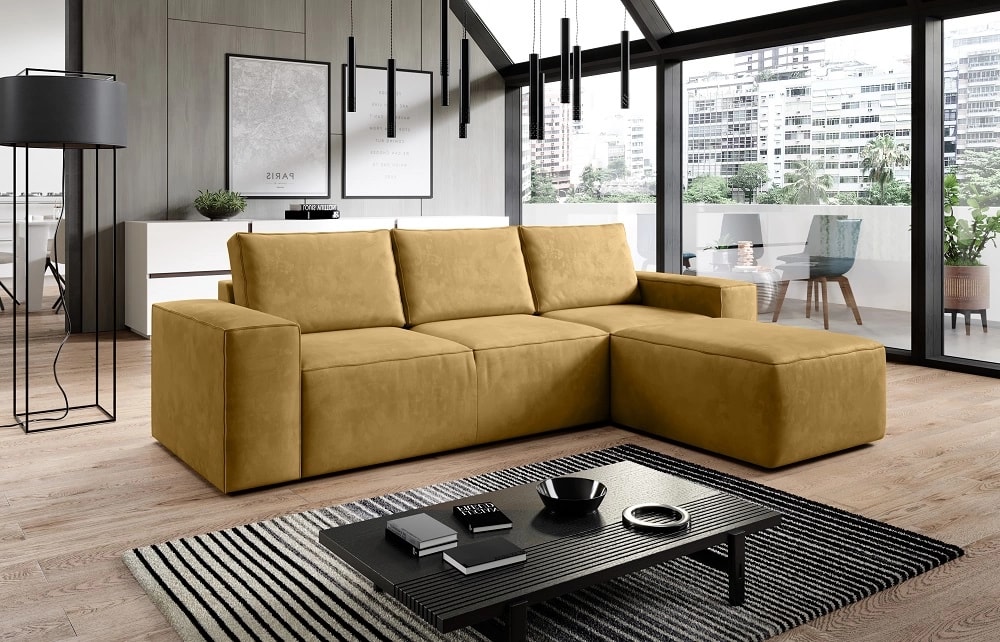
Choosing upholstered furniture is usually not an easy task. Colour, fabric, purpose, patterns, properties - all this often makes you dizzy. Therefore, when the renovation and arrangement of the rooms come to an end, we want to enjoy our choices and admire the furniture in pristine condition for a long time. Does it seem easy to achieve? Certainly not for happy owners of children and pets and for fans of drinking coffee in an armchair in front of the TV or eating meals served in bed accompanied by freshly squeezed juice. And at this point, you should pay special attention to the properties of specific upholstery fabrics. At ELTAP, as we are manufacturers of upholstered furniture, we have a wide selection of various materials. From white, to beige and navy blue, ending with black. We also remember how important are the properties of fabrics that can save you from many troubles. We offer furniture with abrasion-resistant upholstery, elegant-looking, pleasant to the touch, suitable for animal owners, easy to clean, and glossy. What's more, our materials are also more resistant to absorbing liquids into the fabric, i.e. they have hydrophobic properties - "water repellent".
What are the benefits of having furniture with a water-repellent fabric?
• Reducing fluid absorption
• Facilitating cleaning
• Minimizing the risk of material contamination
What are water repellent fabrics?
The water repellent fabric is a material covered with a special protective layer, creating a hydrophobic coating that protects against rapid penetration of liquids. This prevents the fabric from immediately absorbing water, causing the liquid to condense on the surface of the fabric. In contact with water, hydrophobic materials form balls on the outside that can be easily removed from the surface of the fabric. Thanks to this, we have time to gently drain the spilled liquid using a soft cloth or paper towel. All because liquid (e.g. water, coffee, wine) forms into drops and does not penetrate into the fabric. However, it should be remembered that with prolonged contact with water or with a greater pressure difference, the material will slightly absorb water. So you can't wait too long to clean up the mess.
How did it start? - The history of fabrics with a water-repellent coating.
It turns out that water-repellent fabrics have a long history, and at the beginning a solution related to clothing was sought.
The first written attempts to obtain waterproof protective clothing date back to the 15th century. At that time, sailors tried to impregnate their clothes with linseed oil, animal fat or wax. We cannot say whether these attempts were successful or not. However, the first patented waterproof fabric was produced some 400 years later in England by Charles Macintosh, who patented it in 1823.
Yes and now moisture-resistant (water repellent) jackets made of hydrophobic materials will prove themselves during showers.
How to remove liquid from water repellent fabrics?
• Gently blot the stain with a paper towel.
• When the drops are no longer visible, gently press the paper towel against the fabric
• Repeat until the towel is dry
• And it’s done!
Sounds great, right? We are delighted with this property of fabrics. No more drying water on the sofa and cleaning spilled wine on your beloved corner.
We highly recommend our range of water repellent fabrics which are available in many types of fabrics and colours. All this to ensure you the greatest joy of using ELTAP furniture every day and on holidays.
Discover fabrics from the ELTAP collection that have a hydrophobic coating. Below, there is an example of our popular Nube fabric. In the attached photos you can see how the drops of liquid remain on the fabric and are not absorbed.
